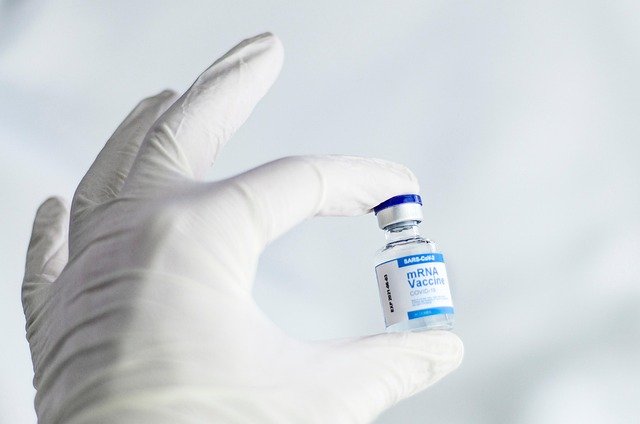Liver Cirrhosis: Warning Signs You Shouldn't Ignore
Liver cirrhosis is a chronic condition that affects millions of people globally. While it is a serious health issue, it doesn’t necessarily mean the liver has stopped working altogether. Rather, it means that the liver has become heavily scarred, which hinders its normal functioning. Detecting cirrhosis in its early stages is essential, as prompt medical attention can help slow its progression and reduce the risk of severe complications. Being aware of the early warning signs is vital for maintaining long-term liver health.

Understanding Liver Cirrhosis and Its Impact on Overall Health
Liver cirrhosis occurs when healthy liver tissue is gradually replaced by scar tissue, preventing the organ from functioning properly. This progressive condition develops over years as a result of various factors including chronic alcohol consumption, viral hepatitis, nonalcoholic fatty liver disease, and certain genetic disorders. As the liver plays a crucial role in over 500 bodily functions—including detoxification, protein synthesis, and nutrient storage—cirrhosis can have far-reaching effects on overall health.
When cirrhosis develops, the liver’s ability to filter toxins, process nutrients, and regulate blood clotting becomes compromised. This can lead to complications throughout the body, from cognitive dysfunction (hepatic encephalopathy) to kidney problems and increased risk of liver cancer. The liver remarkably can compensate for damage in early stages, which is why symptoms often don’t appear until significant scarring has occurred—making early detection critical for effective management.
Key Warning Signs of Liver Cirrhosis
Recognizing the early signs of liver cirrhosis can be challenging because they’re often subtle and easily attributed to other conditions. However, paying attention to certain symptoms can help identify potential liver issues before they progress to advanced stages. Common early warning signs include fatigue that persists despite adequate rest, unexplained weight loss, loss of appetite, nausea, and mild abdominal discomfort.
As the condition advances, more noticeable symptoms may develop. These include yellowing of the skin and eyes (jaundice), itchy skin, spider-like blood vessels on the skin (spider angiomas), redness on the palms of hands (palmar erythema), and confusion or difficulty concentrating (hepatic encephalopathy). Men may experience gynecomastia (enlarged breasts) and testicular atrophy, while women might have menstrual irregularities. Any combination of these symptoms warrants prompt medical evaluation.
The Significance of Weight Loss and Appetite Changes
Unexplained weight loss and changes in appetite are significant warning signs of liver cirrhosis that should never be ignored. When the liver cannot process nutrients effectively, the body’s metabolism changes, often leading to malnutrition despite adequate food intake. Many patients report feeling full after eating very small amounts of food, a condition known as early satiety.
The liver’s reduced ability to produce bile—essential for fat digestion—further compounds nutritional problems, making fat absorption difficult. This can lead to muscle wasting and significant weight loss even when caloric intake seems adequate. Additionally, cirrhosis can cause changes in taste perception and persistent nausea, further reducing the desire to eat. These nutritional challenges create a vicious cycle, as poor nutrition further compromises the liver’s ability to regenerate and function properly.
Understanding Abdominal Changes and Fluid Retention
One of the most physically apparent signs of advancing liver cirrhosis is abdominal distension and fluid retention. As cirrhosis progresses, increased pressure in the portal vein (portal hypertension) forces fluid to leak into the abdominal cavity, causing ascites—an accumulation of fluid that can make the abdomen appear swollen or distended. This condition can be uncomfortable and may make breathing difficult when severe.
Beyond ascites, many patients also experience peripheral edema—swelling in the legs and ankles due to fluid retention. These fluid balance issues stem from multiple factors, including decreased albumin production by the damaged liver and hormonal changes that affect sodium retention. When combined with other symptoms like jaundice or spider angiomas, these abdominal changes strongly suggest liver dysfunction and require immediate medical attention. Regular monitoring of abdominal girth can help track disease progression in diagnosed patients.
How Easy Bruising and Bleeding Indicate Liver Problems
Unexplained bruising and prolonged bleeding represent serious warning signs of liver cirrhosis that directly reflect the organ’s compromised function. The liver produces most of the proteins responsible for blood clotting, including factors II, VII, IX, and X. When cirrhosis impairs this production, the body’s ability to form proper blood clots becomes compromised.
This coagulation difficulty often manifests as easy bruising from minor bumps, nosebleeds that are difficult to stop, bleeding gums, or unusually heavy menstrual periods. In more severe cases, patients might notice blood in vomit (hematemesis) or black, tarry stools (melena)—both indications of gastrointestinal bleeding that requires emergency care. These bleeding tendencies are particularly concerning because they can signal the development of varices—enlarged blood vessels in the esophagus or stomach that can rupture and cause life-threatening hemorrhages.
Treatment Options and Management Approaches
While liver cirrhosis cannot be reversed, treatment focuses on slowing progression, managing complications, and improving quality of life. The approach varies based on the underlying cause, severity, and specific complications present. For alcohol-related cirrhosis, complete abstinence from alcohol is essential. Antiviral medications may help those with hepatitis B or C. Patients with nonalcoholic fatty liver disease often benefit from weight loss, blood sugar control, and cholesterol management.
| Treatment Approach | Purpose | Approximate Cost Range |
|---|---|---|
| Medications (e.g., diuretics) | Manage fluid retention | $10-$100+ monthly |
| Endoscopic procedures | Treat esophageal varices | $2,000-$15,000 per procedure |
| Nutritional therapy | Prevent malnutrition | $200-$500 monthly for supplements |
| Liver transplantation | For end-stage liver disease | $150,000-$800,000+ total cost |
Prices, rates, or cost estimates mentioned in this article are based on the latest available information but may change over time. Independent research is advised before making financial decisions.
Regardless of the cause, managing cirrhosis involves lifestyle modifications, including a low-sodium diet to manage fluid retention, avoiding certain medications that strain the liver, and regular monitoring through blood tests and imaging studies. In advanced cases where the liver can no longer function adequately, liver transplantation may be considered as a life-saving intervention.
Liver cirrhosis represents a serious health challenge, but recognizing its warning signs early can make a significant difference in treatment outcomes. By understanding the symptoms—from subtle changes in weight and appetite to more obvious signs like fluid retention and easy bruising—patients can seek medical attention when intervention is most effective. While cirrhosis causes permanent liver damage, proper management can slow its progression and help maintain quality of life for many years. Regular check-ups with healthcare providers, especially for those with known risk factors, remain the cornerstone of early detection and effective treatment.
This article is for informational purposes only and should not be considered medical advice. Please consult a qualified healthcare professional for personalized guidance and treatment.




